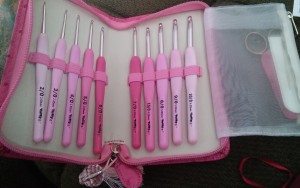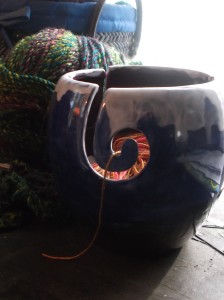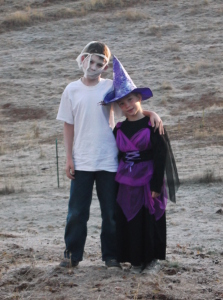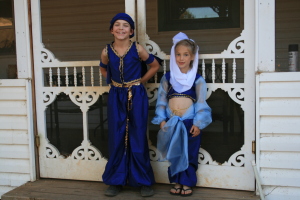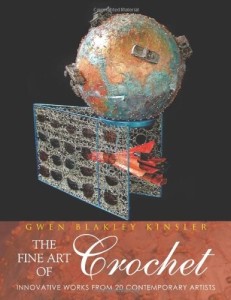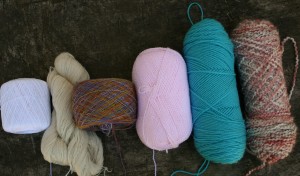 So this is the time of giving. I often feel a little overwhelmed with feeling obligated to purchase gifts. Often the people in my life really do not need anything, and choosing a “special”, “you probably wouldn’t buy it for yourself, but you will love it gifts” are feel daunting to find. So I thought I would offer a little help in purchasing for that favorite crocheter.
So this is the time of giving. I often feel a little overwhelmed with feeling obligated to purchase gifts. Often the people in my life really do not need anything, and choosing a “special”, “you probably wouldn’t buy it for yourself, but you will love it gifts” are feel daunting to find. So I thought I would offer a little help in purchasing for that favorite crocheter.
I know the people in my life feel that they cannot purchase anything for my craft as they don’t know as much about as I do, and they think I probably already have everything I want or need, but I have been surprised over the last year from friends that have given me crochet gifts that I find really impressive. So here is what as impressed me, and hopefully will help you shop for that favorite crocheter, even if that is yourself.
An actual set of hooks. This sounds a little odd, since I have been crocheting for over years, I should have hooks…and I do, but receiving them in a case where they all match and are coordinated, that is something special. I received a set of Tulip hooks, I had never really used Tulip hooks before, but I will admit I was pleasantly surprised. The set included 10 hooks ranging from 2mm- 6mm (they did not have the standard US letters, but as most every pattern now lists that millimeters of the hook within the pattern, it does not really affect the usage). The handles on each were ergonomically correct with cushioned handles, which are pleasant, and there is absolutely no weird plastic smell that I have noticed with some other plastic handles (there is nothing worse than having your hands smell odd after you have been crocheting). The set also came in a nice case, which also had yarn needles and small scissors, so it included everything I need to take a project on the go. The hooks are not going anywhere and it looks a lot better than the zip lock bag I use to carry things in. The price can look a little overwhelming at a first glance, but there are other size kits and sets, so prices can vary, but when you figure that a good -crochet hook alone can cost between $7-12 US dollars, purchasing a full set can give a price break on the overall cost of the hooks, and then give some added bonuses. (You can check out some Tulip sets, including the one I have here)
Another gift I received this year was a yarn bowl. I had never had one before, and then I received two as gifts this year. I find that I use them all the time now. One was actually part of an additional gift from a “paint it yourself” Ceramic store, where the gift included me getting the opportunity to paint it and have it fired. This was a fun gift that brings extra memories to heart when I use it. The second is a ceramic bowl that is handmade and fired with a beautiful lustered sheen. Now, I know that it might sound odd that I use two yarn bowls now, but it is an easy way to keep multiple projected contained and organized, and looks beautiful. (Find your own handmade and fired yarn bowl here)
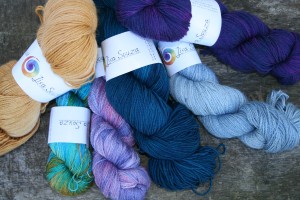
Yarn is always a great gift for crochet lovers, especially if it is something that they do not usually purchase for themselves.
Other lovely gifts can easily include good yarn. I know that it can seem difficult to purchase yarn, especially if you do not usually use it yourself, but if you visit a local yarn store the staff can usually address any questions you have and steer you to something in your price range and give you an idea about quantities needed. You should not really worry about how much yarn you purchase for a gift, as there are websites that can easily assist the recipient to patterns and ideas for the yarn. One such website is Ravelry.com. The recipient can simply do a search for patterns using the yarn and the quantity, so any yarn, in any amount is a great thing! (You can not find either of these in your local yarn store, but find some beautiful natural fiber, hand dyed yarn with Lisa Souza here, or if you like some beautiful cottons or Jelly Yarn check out Designing Vashti here)
Speaking of Ravelry, you can actually purchase patterns as a gift and have them downloaded to the receipts account or email. Selecting a pattern for someone can also seem like a challenge, but if you have seen that things that they currently create, be it afghans, hats, scarves, toys, garments, etc. you have a point to start from. You can search patterns and books similar to what they currently work and choose things that you feel fits their style. I guarantee that none of these go to waste. Even if the recipient never actually works that pattern you gave them, it does give them a new level of inspiration, a new idea, which you have shared with them. (Check out my pattern store on Ravelry here)
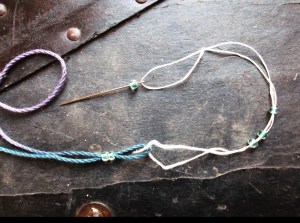
Crocheting with beads is a nice addition to a crochet project that many stitchers do not think about, thus making beads a nice gift.
Some gifts that are completely unexpected are beads. I know this can sound a little off base since I am discussing crochet gifts, but beads can bring a new challenge and help the recipient undertake a new approach to their skill. There are several ways to incorporate beads into crochet projects, and it offers a little something extra, and many crocheters never take the time to go bead hunting for themselves, so it make a great gift. (Here is a link to great online provided)
I would be remised if I did not mention that you could give the gift of membership with the Crochet Guild of America (CGOA). This organization promotes all things crochet and the recipient would receive a subscription to Crochet! Magazine with the membership, as well as discounts to conferences, opportunities educational programs such as the Master’s Program, as well as explore the various ways that they can utilize crochet as a possible career, it really can be a gift that keeps on giving. (See what CGOA has to offer here)
So, if you have a crocheter in your life (they use one hook with yarn, not two needles, in case you were not sure which craft you were dealing with), I hope this gives you a couple of ideas for things that your crocheter really will use, and enjoy, even if they never realized for themselves.

